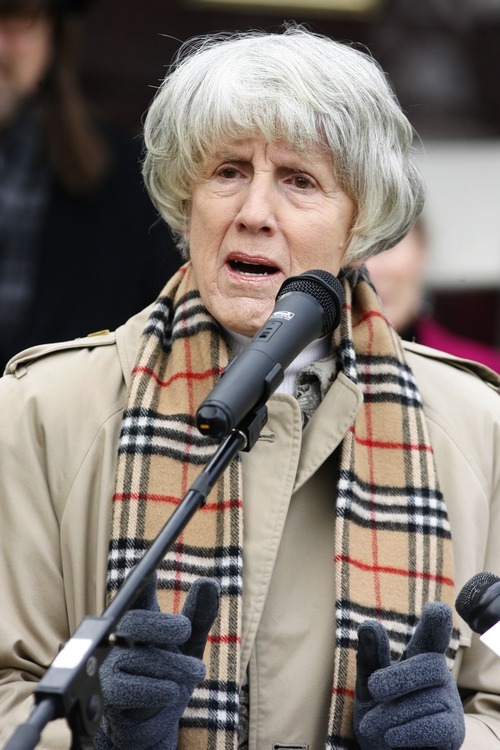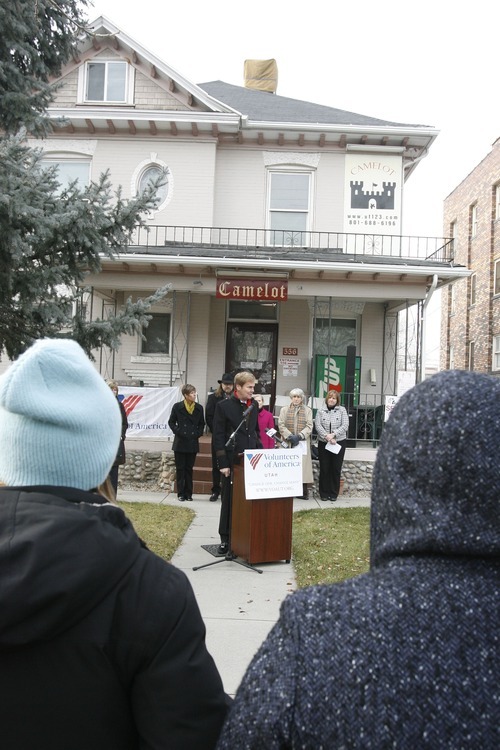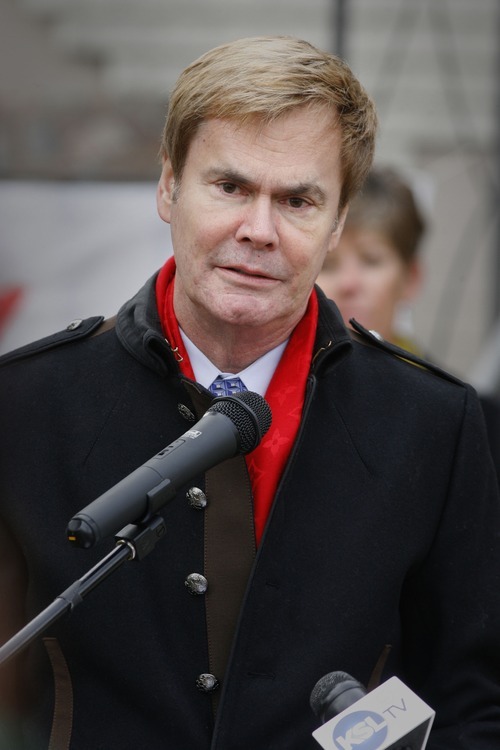This is an archived article that was published on sltrib.com in 2011, and information in the article may be outdated. It is provided only for personal research purposes and may not be reprinted.
Consider it "best chance" housing.
Volunteers of America, Utah, announced Thursday it has purchased a two-story brick home in downtown Salt Lake City that will be used to provide transitional housing for 14 homeless young men, a program that will hopefully catapult them into stable adulthood and keep them off the streets permanently.
The home will serve men between the ages of 18 and 24, offering them a safe place to live, and support services aimed at helping them finish school, land a job and develop life skills needed to make it on their own. It's a first for the nonprofit's Homeless Youth Resource Center, which, in addition to various adult services, operates a Street Outreach program, a day-time drop-in center and a transitional home for young women.
"There may be a few among us who don't believe in giving people a second chance," said Pamela Atkinson, an advocate for the homeless, during a news conference outside the home, located at 556 S. 500 East. But everyone deserves a second, third or however many chances it takes, she said.
The organization used a federal matching grant and private donations to buy the property, including $100,000 kicked in by Salt Lake City and a $100,000 matching grant from the LGBT Community Endowment Fund and the B.W. Bastian Foundation. It still needs to raise nearly $900,000 for renovations and a self-sustaining operating fund. To help, visit http://www.voaut.org.
VOA plans to help relocate the home's current boarders and hopes to have the home ready for its new occupants by next summer. Participants will be able to stay at the home for up to 18 months. Once they leave the home, the young men will be monitored for an additional six months to ensure their success.
"We're just thrilled to have more options to offer housing for people who desperately need it," said Kathy Bray, president of VOA, Utah. "There is room in this home, and there is room in our hearts."
The number of homeless youths in Salt Lake County has increased 160 percent over the past five years, according to the nonprofit, which last year served more than 1,040 homeless young people. Approximately 61 percent were men. The reasons for youth homelessness are varied. About 75 percent of those served at the center report being physically and sexually abused, "often by the people who were supposed to love and protect them," Bray said.
Forty-two percent say they were kicked out or left home after coming out as gay to their parents, something philanthropist Bruce Bastian said "sickens me."
"No God would ever throw his kid or her kid out on the street because of who they are, and yet we see that here," he said Wednesday. "This shouldn't happen."
Youths forced to live on the street "don't have a chance," he said, and ignoring their needs just "pushes their problems into the future."
About 25 percent became homeless after aging out of foster care and don't have the option of moving back home with mom and dad, Bray said.
John Netto, who along with his wife, Catherine Putnam-Netto, donated to the project, said he was inspired to help because of the quality of services and safety offered by VOA, Utah, to the state's homeless and struggling residents. It's personal for him, Netto said. He landed on the streets at age 15 because "it wasn't safe to be at home."
"Fourteen out of 1,000 seems like a slow start, but it's a start," he said.
Economy a 'man-made' disaster for at-risk children
Nationwide, some 1.6 million children are homeless, according to a report released Tuesday by the National Center on Family Homelessness — a 38 percent increase from the period 2007-2010, when a national recession began and ended.
"The recession has been a man-made disaster for vulnerable children," said Ellen L. Bassuk, president and founder of the center. "There are more homeless children today than after the natural disasters of Hurricanes Katrina and Rita, which caused historic levels of homelessness in 2006."
Children who are homeless are at risk for hunger, poor physical and emotional health and academic deficits. The center said only seven states have extensive plans in place to deal with child homelessness. Utah ranked 27th out of the 50 states on overall indicators related to the issue, according to the center. It ranked 34th on state policy and planning, getting a "moderate" rating for its efforts to address homelessness affecting children.













